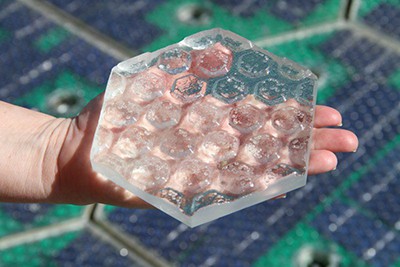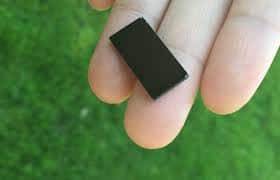Solar energy is an excellent natural resource that can be used to produce electrical power, water heating, air heating and cooling, and transportation.

Its wide applications make it a suitable source of alternative power. However, solar energy is only available during the day as well as during specific seasons. For these reasons, there is constant solar energy research conducted in order to find new techniques to improve the ability to convert it, store it for future usage, and improve solar energy savings for people that are considering going solar.
Here are some of the most significant solar energy research discoveries from 2018.
New Solar Research Discovers a 25% Power Loss Across the UK
Researchers from the University of Huddersfield undertook a study to find out the effectiveness of solar panels in the UK. The new solar research conducted found that some of the panels are experiencing a power loss of up to 25% due to hotspots.

The study involved 2,580 polycrystalline silicon photovoltaic panels. According to Dr. Mahmoud Dhimish, a lecturer and co-director of Photovoltaics Lab in the university, found panels with hotspots generated less solar power than those without.
Hotspots – Hotspots are areas of raised temperatures which affect part of the solar panel. They result from a contained decrease in efficiency and are the leading cause of PV aging.
The result revealed a concentration of hotspots in the North of England. According to Dr. Dhimish, this study concludes results from a previous research showing that cells which are partially shaded have a higher likelihood of developing hotspots.
However, the results showed a lesser occurrence of hotspots along coastal areas, which can be attributed to colder winds from the oceans that cool the PV panels. Dr. Dhimish went ahead to give recommendations aimed to improve the resilience and reliability in the installation of future PV panels.
Firstly, PV panels affected by hotspots should be replaced because they affect the yield energy of a PV installation. Secondly, it is wiser to install PV panels along coastlines because they are less affected by hotspots. Lastly, the solar industry should start solar energy research into the impact of PV hotspotting on the maximum power point tracking (MPPT) units accessible in the market.
New Materials Under Research Set to Change the Solar Market
Recent research into a new class of materials known as perovskites is underway in an effort to reduce the cost of production, and generate clean energy around the world.

Perovskites solar cells offer several advantages over traditional solar cells. They are easy to use and also produce a large amount of energy. With a simple spray of production like a newspaper, perovskites are easy to attach to any surface. Instead of manufacturing new panels, the cells can be sprayed on available panels.
Researchers also feel that perovskites cells will be more efficient in capturing energy from the sun. Silicon solar panels, which are the most popular – operating at 20% efficiency, which means that they capture only a fifth of energy from the sun. Perovskites cells, however, displayed a 22.7% efficiency, and there are hopes that the level can be boosted to a theoretical 40%.
Unfortunately, the technology, despite being promising, faces several challenges. This is especially true when it comes to funding. Being a government-funded lab, administration and funding issues are a constant stressor, with some administrators hoping to prop the prices of fossil fuels.
In fact, the proposed 2018 budget was set to cut funding to the Department of Energy’s renewable office by more than 70% which would have paralyzed several research operations.
Solar Skin Design
A huge percentage of homeowners despise solar panels, due to their lack of aesthetic appeal.
To combat the issue, Sistine Solar has designed customized SolarSkin for homeowners to decide how their solar panels should look. The company has created an online portal that allows homeowners to customize solar panels that mimic their roofs.

The SolarSkin does not interfere with efficiency because it allows the sunlight to pass through to the underlying solar cells while still displaying the desired image on the panel. The concept is a great option for people that are considering going solar, without foregoing the aesthetic appeal of their homes. Homeowners can reduce their environmental impact and keep their roof design intact. With this concept, switching to solar has been made easier.
However, there are concerns that this system is too costly for solar power. For example, a 5-kilowatt roof installation attracts an extra $1,500 assuming the costs are in line with those in the market. Also, the SolarSkin might also reduce the efficiency of solar panels because just like dirt and shade, they minimize the amount of sun reaching the solar cells. Only further research can prove if SolarSkin reduces the efficiency of solar panels and if SolarSkin provides solar savings.
Solar Powered Roads
Solar Roadway got the opportunity to test solar-powered pavement technology along Route 66.

Small hexagonal solar panels will be used to generate electricity. Each tile is made of tempered glass to support the weight of people walking on it. The tiles have a solar cell, a heating element, and LED light.
The idea is that the roads can generate their own power to light themselves up and save on the high costs of lighting the roads. They also generate enough heat to reduce the costs of snow removal. If the panels capture enough energy to heat and light themselves, then the country would enjoy huge solar energy savings.
The idea can also be spread into charging electric vehicles for maximized solar savings. Also, the electricity generated by the roads could contribute to the national grid to provide affordable clean energy and reduce the country’s carbon footprint. For now, the concept requires further testing before it can receive funding.
Solar Water Purifiers
Researchers at Stanford University have developed a small contraption that purifies water using the sun.

These tiny devices are cost effective and could be crucial in improving sanitation in third world countries. Hikers can also benefit from the device instead of consuming contaminated water. With a device smaller than a stamp, switching to solar will be worth the effort.
The tablet-sized device is lined with copper and Nanoflakes of molybdenum disulfide. Through a simple and quick chemical reaction, the device killed 99.99% of bacteria in 25 ml of water in twenty minutes. Though further testing is required before hitting the commercial market, this device is highly advantageous because it can be easily scaled up at low costs.
Why Go Solar?
As mentioned earlier, energy from the sun is one of the clean energy sources available in the world. However, millions are yet to go solar, but inventions and research, such as mentioned above, are the keys to achieving sustainability. The “Why Go Solar” campaign is possible with efficient and cost-effective innovations that ensure every person, on every financial level can afford to switch to solar.